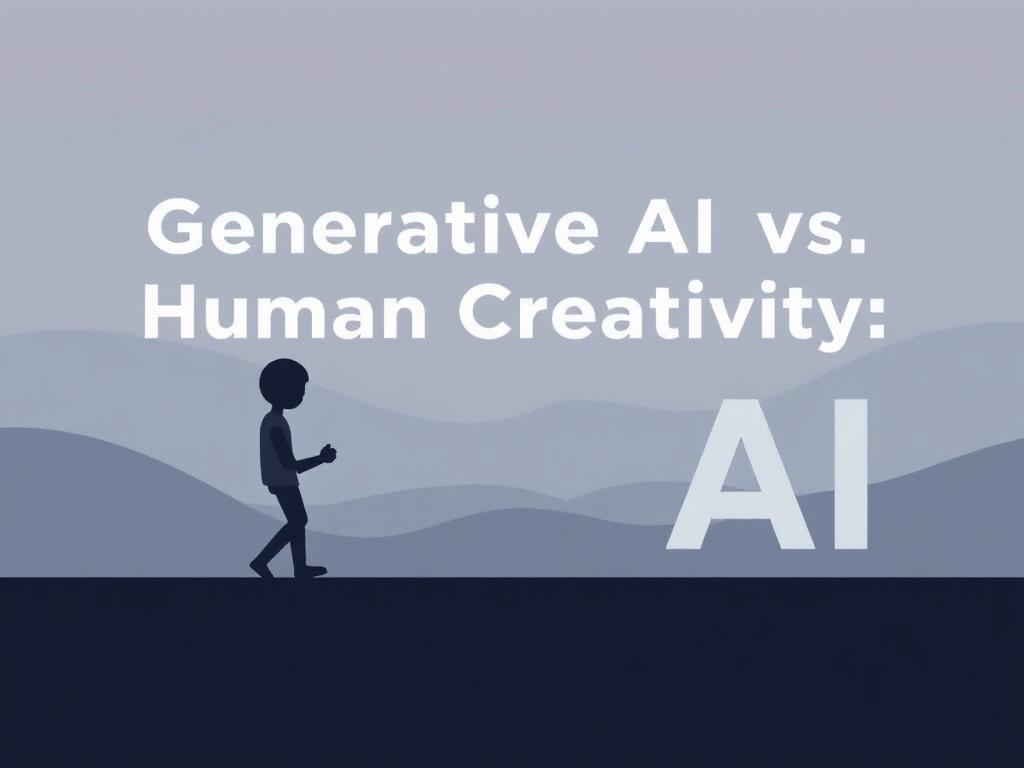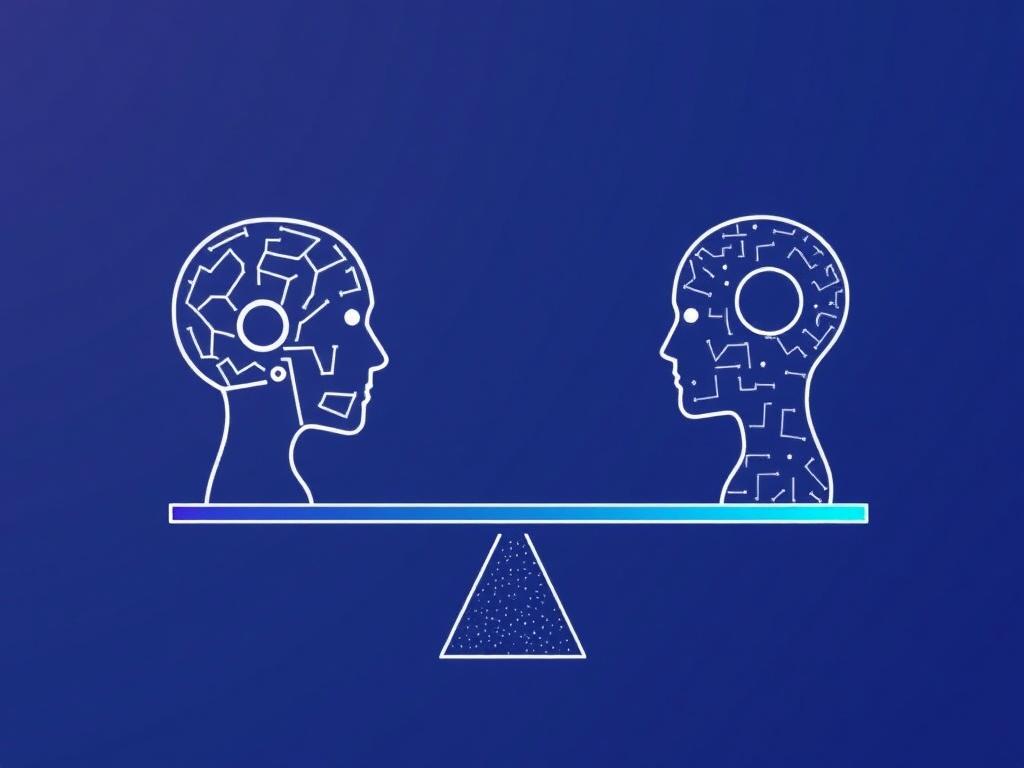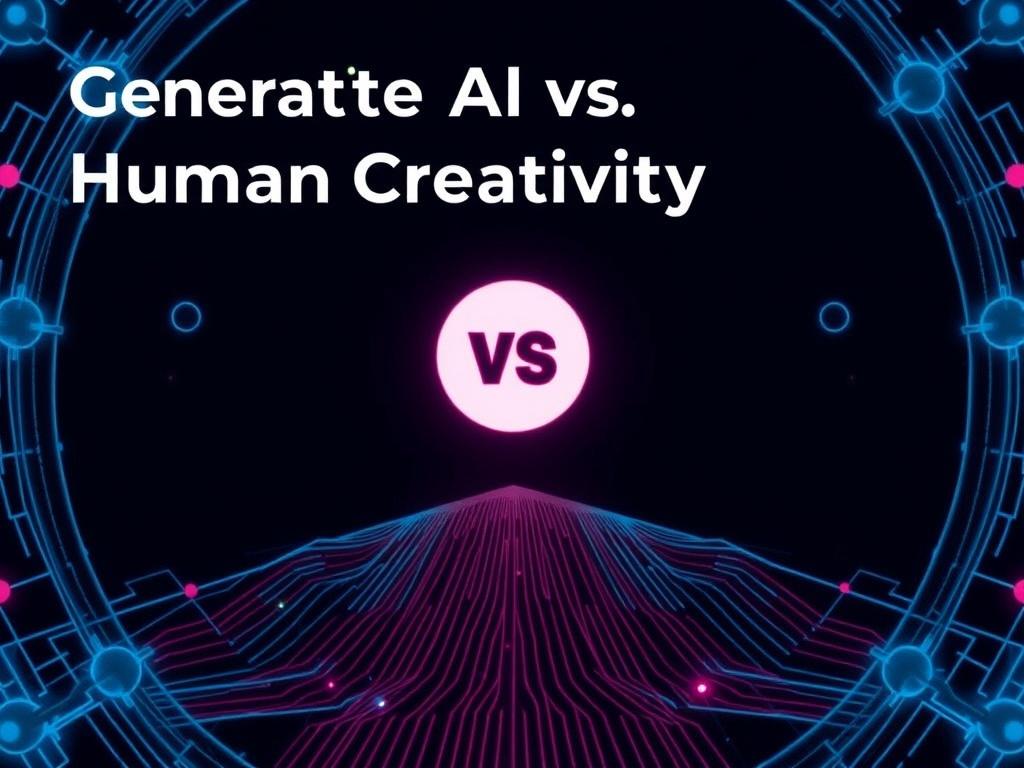Brands today live at the intersection of data and desire, of algorithms and aesthetics. If you’ve been watching the news or scrolling through LinkedIn, you know generative AI is no longer a sci-fi promise — it’s a practical tool sitting on many marketing desks, product teams, and creative studios. But the question that nags every thoughtful brand leader is not whether to use generative AI, but how to use it without losing the soul of the brand: that unpredictable, messy, intensely human spark we call creativity. This article unpacks that tension and offers a practical, balanced approach so your brand benefits from AI’s speed and scale while honoring human originality and intuition.
Why this conversation matters now
We’re in a moment where tools that once required teams of engineers and months of training are available to anyone with a subscription. Generative AI can draft emails, design mockups, write scripts, suggest product names, compose music, and even generate realistic imagery. The speed and cost advantage are transformative. But speed without direction, and capacity without judgment, can do real harm: bland or off-brand messaging, cultural missteps, compliance failures, and flat creative work that confuses customers more than it delights them.
On the flip side, leaning exclusively on human creativity can be slow, expensive, and inconsistent. Humans get tired, have biases, and can’t easily scale to produce the variety of experiences modern customers expect. The sweet spot for high-performing brands is a balance: use generative AI where it amplifies human capability, and preserve human control where nuance, ethics, and brand identity matter most.
What generative AI does well — and where it trips up
Generative AI models are pattern engines. They’re trained on vast amounts of data and they identify statistical relationships that let them produce plausible text, visuals, or audio. That makes them great at certain tasks:
- Rapid ideation and iteration: brainstorm dozens of headlines, taglines, or concepts in minutes
- Personalization at scale: produce tailored subject lines, product descriptions, or landing pages for many audience segments
- Repetitive content production: generate product copy, social captions, or basic ads quickly
- Data-driven optimization: suggest A/B test variants or SEO-friendly titles based on patterns
- Drafting and prototyping: create first drafts of scripts, images, or layouts to accelerate human review
But generative AI has real limitations:
- Context and deep brand understanding: AI can mimic tone, but it lacks lived experience with your brand history and cultural nuances.
- Originality and risk-taking: AI tends to average known patterns, which can result in safe or derivative output.
- Ethical and legal blind spots: models can hallucinate facts, reproduce copyrighted material, or output biased content.
- Emotional intelligence: AI doesn’t truly understand human subtleties or the long-term impact of messaging on reputation.
The implication is clear: use generative AI for what it’s empirically good at, and keep humans in the loop where meaning and brand identity are at stake.
Human creativity: strengths you can’t automate
Human creative professionals don’t just produce content; they synthesize context, history, emotions, and brand purpose into work that connects. Humans excel at:
- Cultural intuition and timing: recognizing what will land or offend at a given moment.
- Risk-tolerant originality: taking creative leaps that break norms and create new trends.
- Moral and ethical judgment: making decisions that align with brand values beyond short-term metrics.
- Strategic narrative building: crafting long-form brand stories that accumulate meaning over time.
- Collaboration and iteration: responding to feedback in nuanced ways and evolving ideas through conversation.
A brand that throws human creativity away because of the allure of automation shortchanges its ability to resonate deeply with audiences.
Practical frameworks for balancing AI and human talent
To operationalize the balance between generative AI and human creativity, here are several frameworks and systems you can adopt right away.
1. The «IDEA» framework — Identify, Delegate, Elevate, Audit
This simple four-step framework helps teams decide where AI should be applied and where humans should remain front-and-center.
- Identify: Map your brand activities. Which tasks are ideation, iteration, editing, compliance, or storytelling?
- Delegate: Assign repetitive, data-heavy, or high-velocity tasks to AI (e.g., product descriptions, draft social posts, first-pass images).
- Elevate: Keep strategic, narrative, and identity-defining tasks with humans (brand pillars, campaign concepts, tone of voice decisions).
- Audit: Regularly review AI outputs for bias, legal risk, and brand drift. Implement human sign-off on any material that impacts reputation.
This approach helps you use AI where it’s efficient and retains human oversight where it matters.
2. The «RACI» model adapted for AI
RACI (Responsible, Accountable, Consulted, Informed) is a classic project management tool. Adapt it to include AI as a role. For each content or creative deliverable, decide:
- Responsible — who executes the work (could be AI for drafting, human for final craft)
- Accountable — who signs off on release (always a human)
- Consulted — who provides insights (e.g., product managers, legal)
- Informed — who gets updates (stakeholders, PR teams)
A rule of thumb: AI can be Responsible for first drafts; humans are Accountable for final approval.
3. Creative workflow example: «Draft > Humanize > Polish > Release»
Here’s a repeatable process you can use for many brand outputs, from social posts to campaign concepts.
- Draft — AI produces several raw options quickly.
- Humanize — humans select best candidates and adjust tone, add voice, ensure cultural fit.
- Polish — editors and designers refine structure, visuals, and legal compliance.
- Release — accountable owner signs off and publishes, with monitoring for performance and reputation impact.
This preserves speed without sacrificing brand integrity.
Where to apply AI in your brand funnel
To make the above frameworks actionable, decide specific use cases across the marketing funnel.
Top-of-funnel (awareness)
Generative AI shines for volume and rapid testing at the top of the funnel:
- Ad creative variations and headlines for A/B testing
- Social media captions tailored for audience segments
- SEO-friendly blog ideas and first drafts
- Automated localization of inbound marketing content
But ensure a human touch for any cultural or influencer-facing content that could impact brand perception.
Middle-of-funnel (consideration)
Here, AI can help with personalization and content repurposing:
- Personalized email sequences based on behavioral data
- Customized product comparisons and landing pages
- Dynamic FAQs and chat responses that are reviewed by humans
Human strategists should set the messaging hierarchy and brand values that AI uses.
Bottom-of-funnel (decision and loyalty)
Use AI for operational efficiency but keep humans close for trust-sensitive tasks:
- Automated follow-up offers and churn-prevention messaging
- Drafts for loyalty program content and user success stories
- AI-assisted customer support replies with human escalation rules
For anything involving customer trust, financial decisions, or legal language, human verification is non-negotiable.
Controls, governance, and ethical considerations
Using generative AI responsibly requires clear governance. Without guardrails, speed becomes a liability.
Policies you’ll want in place
- Model usage policy: what models are allowed, for which tasks, and by whom.
- Data handling rules: what proprietary or customer data can be sent to third-party models.
- Content review standards: when human sign-off is required and what checks (legal, diversity, accessibility) must happen.
- Version control and provenance: maintain records of prompts, model versions, and edits to trace decisions.
Bias, hallucination, and legal risk
Generative AI can produce confident-sounding errors (hallucinations) or reproduce biased patterns in training data. Mitigation steps:
- Establish fact-checking workflows for claims made in AI-generated content.
- Run bias audits on outputs that touch identity, demographics, or sensitive topics.
- Limit the use of models for legal, medical, or financial advice; always involve licensed professionals.
Transparency and consumer expectations
Consumers are increasingly curious and cautious about AI. Brands that are transparent about using AI — for example, noting when customer service replies are AI-assisted — build trust. Consider labelling where appropriate and make it easy for users to opt into human interaction.
Organizational design: roles you’ll need
To balance AI with human creativity, many teams find it helpful to add specific roles or upskill current roles.
Key roles and responsibilities
- AI Product Owner: Defines where AI fits the product and marketing stack, prioritizes use cases.
- Creative Director: Owns brand voice and final approval of creative outputs.
- Prompt Engineer/AI Specialist: Crafts prompts and manages model performance to improve outputs.
- Ethics & Compliance Lead: Audits for risk and ensures data policies are followed.
- Content Editors: Humanize AI drafts, apply narrative strategy, and ensure quality.
Smaller teams can distribute these responsibilities across existing roles, but clarity is essential.
Tools, metrics, and KPIs to track
How will you know you’ve achieved the right balance? Track both efficiency metrics and brand health indicators.
Operational metrics
- Time-to-first-draft (reduction after AI adoption)
- Output volume (number of variants generated)
- Cost-per-asset (creative cost savings)
- Percentage of assets requiring human revision
Brand and performance metrics
- Engagement rates (likes, shares, time on page)
- Conversion rates by content type
- Brand lift and sentiment analysis
- Reputation/risk incidents related to AI outputs
A balanced program should show operational gains without erosion in brand metrics.
Examples and case scenarios

Concrete examples help. Below are hypothetical and composite scenarios many brands will encounter.
Scenario 1: A DTC apparel brand
A small apparel brand uses generative AI to write product descriptions and produce 10 headline variants per product for ads. Result: time to market drops dramatically, ad testing accelerates, and sales increase. But a few AI-generated descriptions included tone shifts that confused brand fans. Solution: add a two-step human edit and a core style guide fed into prompts. Outcome: maintain speed while preserving voice.
Scenario 2: A global CPG company
A consumer-packaged-goods company experiments with AI to localize ad copy in dozens of markets. AI handles initial localization; local teams review and adjust cultural references. Governance includes mandatory local legal review for regulated claims. This hybrid model scales reach while protecting the brand in diverse markets.
Scenario 3: A fintech startup
AI drafts onboarding emails tailored to user segments. Due to strict compliance needs, every email passes a legal and compliance checkpoint. AI reduces drafting time, while humans ensure legal and trust elements are solid before sending. The startup achieves personalization at scale without regulatory missteps.
Practical prompt and collaboration tips
If you’re ready to run experiments, here are practical tips to get useful outputs and better collaboration between teams and models.
Prompt engineering basics
- Be explicit about constraints: “Write a 50-word product description in a playful tone that avoids fashion clichés and does not mention price.”
- Give examples: feed the model a few sample lines that represent your voice.
- Iterate: ask for multiple variants and refine the highest-potential ones.
- Include decision rules: tell the model when to escalate to a human touchpoint.
Human review checklist
Use a short checklist each time humans review AI outputs:
- Brand voice alignment — yes/no
- Factual accuracy — verified sources
- Cultural sensitivity — local review where needed
- Legal/compliance flags — escalate if uncertain
- Accessibility checks — alt text, readability, captioning
This checklist can sit in your content management workflow to ensure consistent checks.
How to pilot AI without jeopardizing your brand
Piloting is about learning quickly and minimizing risk. Here’s a step-by-step pilot plan you can run in 6–8 weeks.
Pilot plan outline
| Week | Activity | Deliverable |
|---|---|---|
| 1 | Identify use case and stakeholders | Use-case brief and stakeholder list |
| 2 | Set governance and success metrics | Governance checklist and KPIs |
| 3 | Run AI experiments and generate drafts | Sample outputs and variant sets |
| 4 | Humanize outputs and apply checklist | Finalized creative assets |
| 5 | Soft launch with controlled audience | Performance data and user feedback |
| 6-8 | Analyze results and refine model/process | Pilot report and scale recommendation |
This structured approach prevents premature scaling and surfaces issues early.
Common mistakes to avoid
Knowing where others stumble helps you avoid the same. Common mistakes include:
- Deploying AI-generated content live without human review
- Using sensitive or proprietary data with external models without agreements
- Assuming AI output equals creativity; letting it define brand strategy
- Ignoring bias and accessibility considerations
- Not measuring brand impact, focusing only on cost/time savings
Avoiding these traps keeps your efforts sustainable and reputationally safe.
Balancing culture and tools
Technical adoption fails without cultural acceptance. Encourage a culture where AI is seen as a collaborator, not a replacement. Promote cross-functional workshops where creative teams and AI specialists demo what’s possible and co-create guidelines. Celebrate small wins that showcase both AI speed and human judgment.
Training and upskilling
Invest in training: teach creative teams prompt craft, and teach AI teams about brand strategy. This mutual learning creates respect and better outputs. Offer short, practical training modules: “Prompting for Brand Voice,” “AI Ethics for Marketers,” and “Human Review Best Practices.”
When to keep humans fully in charge
Despite AI’s strengths, some areas should remain human-first:
- Brand repositioning or major identity work
- Crisis communications and PR
- Legal and financial disclosures
- Complex editorial storytelling and long-form content
- Any content that touches sensitive cultural or identity topics
Treat these as sacred. Let AI support — perhaps with research or initial drafts — but keep humans leading the process.
Measuring return on creative investment with AI
To evaluate whether AI integration is working, balance quantitative and qualitative measures.
Quantitative
- Production throughput and reduced time/cost
- Performance lifts in engagement or conversion for AI-assisted assets
- Reduction in revision cycles
Qualitative
- Brand cohesion scores from creative reviews
- Customer sentiment analysis
- Feedback from frontline teams using AI outputs
A true ROI analysis accounts for cost savings and the intangible value of long-term brand equity.
Future-forward thinking: where this balance is headed

The tools will only get better: models will be more controllable, better at following brand voices, and more integrated into creative suites. That makes cultural and governance frameworks even more important. Brands that build strong human-AI collaboration ecosystems now will outpace competitors later because they’ll retain brand authenticity while scaling personalization and creativity.
Expect new roles, tighter legal frameworks, and more industry standards for model provenance and data usage. Ethical leadership will become a competitive advantage: brands that prioritize trust and transparency will have more engaged customers in the long run.
Checklist: getting started today
- Map brand activities and identify pilot use cases suitable for AI.
- Set clear governance: who approves, what data can be used, and what audits are required.
- Run a short pilot with measurable KPIs and human review checkpoints.
- Develop a prompt and human-review playbook for consistent outputs.
- Track both operational metrics and brand health indicators.
- Upskill teams — invest in prompt training and brand governance education.
- Iterate and scale only after proving safety and efficacy in controlled launches.
Resources and tools to explore
- Content management systems with AI integrations for draft generation and workflow automation
- AI governance platforms that log prompts and outputs for traceability
- Bias-auditing tools and third-party review services for sensitive content
- Training providers for creative teams to learn prompting and ethical AI use
These resources help reduce friction and accelerate safe adoption.
Final thoughts
We’re building new creative ecosystems where generative AI and human imagination coexist. The promise is enormous: more ideas, faster execution, greater personalization, and lower costs. The peril is also real: brand dilution, cultural missteps, and ethical oversights. The solution isn’t elimination of one side or the other — it’s partnership. Treat AI as a collaborator that amplifies human strengths and frees humans to focus on strategy, nuance, and the big creative bets that build lasting brands. With clear governance, honest measurement, and a culture that values both speed and meaning, you can find the balance that propels your brand forward without losing what makes it unique.
Conclusion

Finding the perfect balance between generative AI and human creativity is less about choosing one over the other and more about designing systems where each does what it does best: let AI handle scale, iteration, and personalization while humans lead on purpose, nuance, and strategic storytelling — and make that balance repeatable, measurable, and aligned with the values that make your brand matter.
